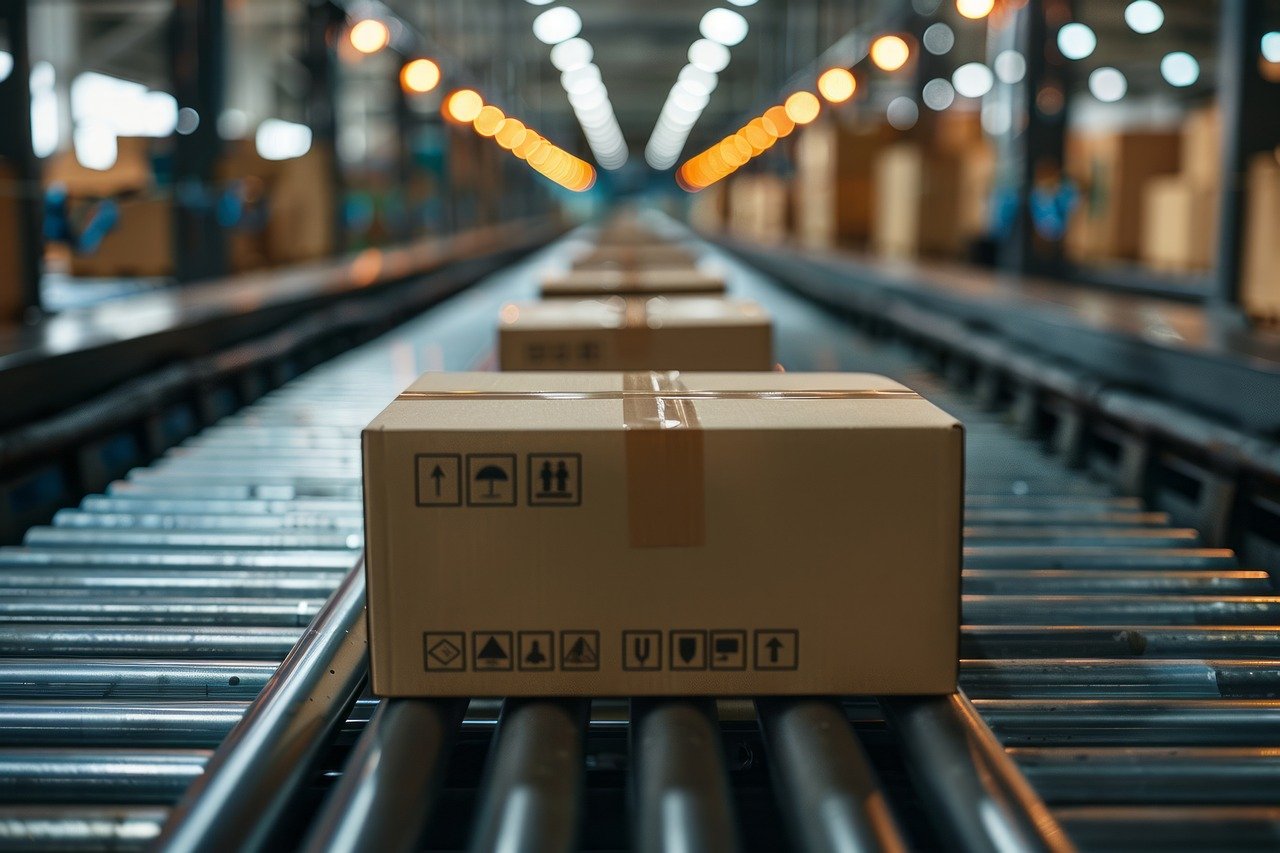3 Proven Methods to Fulfill Your Shopify Orders in 2024
Jun 6, 2024

Let us attempt to describe you (the reader) of this article:
You're likely thriving on Shopify or at least planning to. You're tech-savvy (not like Elon Musk) and experienced in e-commerce, but your growing store is facing challenges.
You're aiming to scale up, but that means tackling the e-commerce logistics monster of shipping delays, failed deliveries, and chargebacks.
If this sounds familiar, you're in the right place.
This article covers efficient order fulfillment for rapid business scaling. Whether you're new or experienced, there's an order fulfillment method for you.
In this article, we'll explore:
Best benefits of a good order fulfillment strategy
Three established Shopify order fulfillment methods
Pros and cons of each method
The best method for your e-commerce operations
Why a good order fulfillment strategy is a can’t-miss opportunity
In e-commerce, efficient order fulfillment can make or break your business.
It's not just about getting products from point A to point B; it's about creating an experience—inventory management, picking, packing, printing, and delivery—that keeps customers returning for more.
When you nail your fulfillment strategy, you are never too far from these feel-good results:
Boosted customer satisfaction and repeat purchases
Customer satisfaction and order fulfillment are eternally linked — one is incomplete without the other.
All the research, including this one by Circuit, suggests that most customers (at least 70%) would rate a shopping experience poorly if the delivery process (i.e., order fulfillment to us e-commerce experts) isn’t efficient.
Customers do a happy dance when orders arrive on time and in perfect condition. And happy customers are more likely to become repeat buyers.
But when orders arrive late or in bad shape, customers push their thumbs down—bad news for your sales target.
Reduced risk of chargebacks
Even if it is improbable, we all would prefer a dispute-less e-commerce planet. One where the customer gets his order on time, and you never have to lose money to chargebacks in the way that 68% of retailers currently do.
The average cost per failed delivery in the US is $17.2. That’s a couple of billion dollars yearly lost in the abyss of e-commerce logistics.
If your orders are fulfilled accurately and on time, your chances of avoiding this expensive nightmare increase exponentially.
Protects your payment provider account
Your payment provider is like a stern teacher – they're always watching.
Poor fulfillment can lead to low feedback scores, negatively impacting your account with payment providers.
3 Order Fulfillment Options on Shopify
Grab a cup of coffee (or tea; we don't discriminate), and let's find out what order fulfillment means for different Shopify stores.
Dropshipping
Defining Trait: Very hands off
Suitable for: Cash-strapped retailers with little or no e-commerce experience
What is Dropshipping?
It’s essentially running a store where you never actually touch the products you sell. In a fulfillment sense, being a dropshipper means you don't keep any inventory.
Instead, when a customer orders, you purchase the item from a third-party supplier who ships it directly to the customer.
You’re only acting as a product matchmaker – introducing great products to eager customers and leaving the supplier to handle everything else.
Advantages of Dropshipping Fulfillment
Most would argue that a hands-off approach in an industry as intense as e-commerce is suicidal. Fortunately, that’s not always the case.
The dropshipping/hands-off fulfillment style does have a few good things going for it:
No cash is required for inventory
Dropshippers don't need to invest in inventory upfront, which means lower risk and less initial capital required.
The entire thing is virtual. A dropshipper only has to forward the customer order and shipping details to the supplier, who then ships the purchase to the customer.
Fast product testing
Very little restricts the dropshipper from experimenting with as many products as possible.
They can receive and manage inventory, process orders, run quality control, and package and ship items via a supplier network.
Fulfill after payout
A dropshipper will typically only purchase the product after the customer has paid, which means better cash flow management. A bit like getting paid to go shopping for someone else.
Disadvantages of Dropshipping Fulfillment
Dropshipping fulfillment has the same problems as asking someone to run your business for you.
No control over the supply chain
Dropshippers are at the mercy of their suppliers regarding product quality, inventory management, and shipping times.
It's like being a backseat driver in your own business. A product could be out of stock, but you won’t know till a customer makes the order and doesn’t get it.
Then, customer satisfaction plunges.
No branded products
Creating a unique brand experience can be challenging when you're not handling the products directly.
Adding your special touch is hard when you never actually touch the product.
Lengthy shipping times + delays
Shipping dropshipper style can be languid because:
One, geography. If your supplier is located overseas (like in China), they’ll need to use international shipping, which takes longer than domestic shipping.
Two, processing time. The supplier must process the order before your product gets to the customer.
If your supplier has a high volume of orders (as is often the case with the good ones), order processing time can be pretty slow.
How to fulfill orders through dropshipping
Common Approach
Many dropshippers use apps like Dsers to source products from AliExpress, simplifying bulk order fulfillment and inventory management.
Niche-Focused Suppliers
Look for dropshipping apps specializing in specific categories, such as clothing or home goods.
Some even offer local inventory for faster shipping, giving you the best of both worlds.
Pro Tip:
Always check that your dropshipping supplier's fulfillment location is within fast shipping distance of your customer. If the location is a long way out (for example, China), consider using a 3PL provider in partnership with the supplier to speed things up.
In-House Fulfillment: The DIY Method
Defining Trait: Very hands-on/ Fully DIY
Suitable for: Experienced e-commerce retailers with predictable, low order (<50 per day) volumes — and a preference for complete control.
What is In-House Fulfillment?
In-house fulfillment is the e-commerce equivalent of a home-cooked meal — a hands-on approach where you manage every step of the fulfillment process.
You buy/make the ingredients (inventory), store them in your pantry (warehouse), and serve the dish (package and ship) yourself when an order comes in.
Advantages of In-House Fulfillment
Complete Control
You're the captain of this ship. From inventory management to packaging design, every decision is yours to make.
Custom Packaging
If you want to wrap your products in hot pink tissue paper with a handwritten note, go for it.
In-house fulfillment lets you create a unique unboxing experience from you directly to your customer.
Faster Shipping
When you control the entire process, you can often get orders out the door at incredible speed.
You don’t need to submit yourself to the internal operation of any supplier or 3PL provider.
Disadvantages of In-House Fulfillment
Like the chaos ensuing if everyone produced their food from scratch, in-house fulfillment can be challenging to manage.
Whatever cost benefits you gain from being the commander-in-chief are offset by the time and effort needed to build a functional in-house fulfillment center.
The disadvantages in detail:
Time-Consuming
Fulfilling orders yourself can eat up more time than a Netflix binge-watching session.
Depending on your product packaging style and order volume, fulfilling an order can take several hours to 2-5 days.
Setup Required
You need three things to set up a proper in-house fulfillment operation — people, space, and infrastructure.
People—You can either handle the entire order fulfillment process yourself or hire people to help for a fee.
Space—Is your garage oversized enough to hold inventory while you pack and print in your home office? Or do you need to rent a bigger space?
Infrastructure—Fulfilling orders internally requires systems and technology to work.
You may need to set up a system that includes ERP (Enterprise Resource Planning), WMS (Warehouse Management System), OMS (Order Management Software), barcode scanning and labeling, and shipping integration.
Each system component has its function and is geared toward efficient order fulfillment.
ERPs will help integrate different processes (inventory, sales, and finance) into one system.
WMS lets you track inventory management and optimize the picking, packing, and shipping processes.
In-house fulfillment is synonymous with building your own mission control center.
It's fun at first but can get intense, especially if you still want to focus on core business operations like design and marketing.
Hard to Scale
As your business grows, so does the challenge of in-house order fulfillment. Scaling up requires more staffing and physical space.
Before you know it, your garage might start looking like an Amazon warehouse.
How to do In-House Fulfillment
Sort out how you get the product
Ensure there’s a working system in place for you to receive the product—easy enough if you make the product yourself.
But if you work with a supplier, look for one with a low minimum order quantity and good quality. Hard to find, but not impossible.
Track inventory
Constantly monitor stock levels to avoid shortages + use inventory management software.
Pick and pack
Use SKUs, barcode scanners, or other handheld devices to identify and pick the right products.
Choose appropriate boxes, envelopes, or containers. Securely arrange the items in the packaging.
Use bubble wrap or packing peanuts to protect the product. Insert relevant documentation and seal the package.
Ship it
Choose a shipping carrier and dispatch the product.
Use air or sea freight with DDP (Delivered Duty Paid) terms to get your inventory to your location.
Software like ShipStation helps you track shipments, manage returns, and generate shipping labels.
Handle returns
Inspect returned items and make sure to update your inventory accordingly.
3PL Fulfillment: The "Leave it to the Pros" Strategy
Defining Trait: Let the pros handle all the logistics under your supervision
Suitable for: Experienced e-commerce retailers with high order (>50 per day) volumes who want to scale without letting their core business operations suffer + anyone who wants to move on from in-house fulfillment.
What is 3PL Fulfillment?
Third-party logistics (3PL) fulfillment is hiring experts to handle your packing, warehousing, inventory management, and shipping.
It's the e-commerce equivalent of hiring a professional moving company (instead of bribing your friends with pizza to help you move.)
Only this ‘moving company’ is projected to be worth at least $1.3 trillion by the end of 2024.
Advantages of 3PL Fulfillment
Scalability
3PL providers are built to handle everything you can throw at them.
Whether you sell 10 or 10,000 products a day, a good 3PL can handle it.
Accurate Fulfillment
3PLs are logistics experts, which means having systems in place to ensure precise order fulfillment.
Already armed with fully functional warehouses to pick up a store’s inventory, 3PLs will then go on to accurately do everything else, including picking the order, shipping it, and processing returns.
Fulfillment Network
3PLs typically own strategically placed warehouses.
What that means is they have warehouses in locations that facilitate the distribution process. Somewhere close to your supplier and within a reasonable distance from your customers.
On top of that, 3PLs maintain an extensive supply chain network that allows them to negotiate the best deals with external parties like shipping carriers.
There’s hardly a part of e-commerce logistics that a good 3PL would be unequipped to handle. That’s why they are the experts.
Disadvantages of 3PL Fulfillment
Experts, yes. Problem-free, no. 3PL providers are great — not perfect.
Hidden fees, hidden fees & hidden fees
3PL providers incur several costs, as you’d expect. They have to pay for warehouse, labor, and shipping costs.
Because things change rapidly in the e-commerce world, many 3PLs can not afford to make these costs fixed. Some 3PLs even charge hourly rates for tasks, further worsening the unpredictability.
However, there are 3PLs who prioritize customer satisfaction so much that they create detailed invoices covering every part of your e-commerce operations. You never have to worry about hidden charges with these guys because everything is open.
Less Flexibility
You have less control than in-house fulfillment. You can’t customize to your taste without slowing down standard 3PL processes.
For example, if you run a boutique cosmetics brand and wish to include a handwritten thank you note, you may have to pay your 3PL extra for that service.
Plus, in times of emergency, a 3PL may be slower than you to react.
If you want to bundle your products for a flash sale or pull inventory because of quality concerns, you must work through the 3PL’s processes.
Of course, you can navigate that by choosing a 3PL provider with a little less red tape.
How to use a 3PL provider
There are two main options here:
Choose a 3PL in your target country
This is great for domestic shipping, and you'll find plenty of options, especially in economically developed countries.
Use a 3PL in China
Services like Shipsmartly.io help Shopify brands ship to international customers within 5-10 days without them paying duties and VAT.
Because China is a hotspot for suppliers, using a 3PL in China means direct access to manufacturers and reduced shipping times.
Wrap-Up — Choosing the best order fulfillment method for your Shopify brand
You've just completed your crash course in Shopify order fulfillment.
Whether you choose to dropship, DIY, or leave it to the pros, remember that the perfect fulfillment method is like the perfect pair of jeans – it should fit your business just right.
Don’t have a lot of capital? Go the dropshipping route.
Not handling too many orders? Try in-house fulfillment.
Got a high volume of orders and want more efficiency in your supply chain? Find a reliable 3PL provider. Give all the details about your logistics operation and run with it if the vibe is right.
No matter which method you choose, the goal is the same:
Happy customers who receive their orders quickly and correctly — and don’t leave damning negative reviews. 👍




